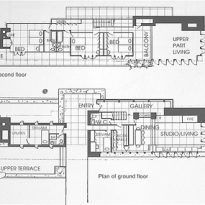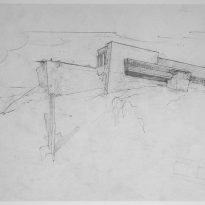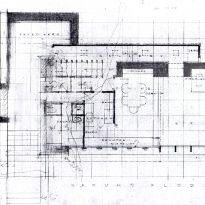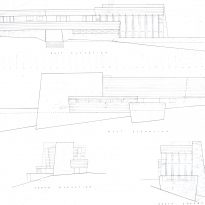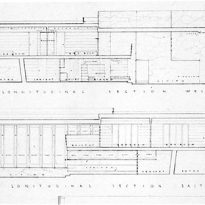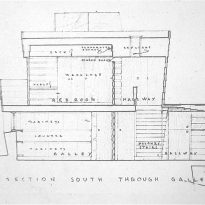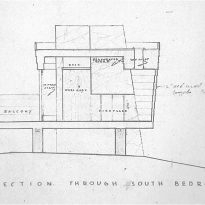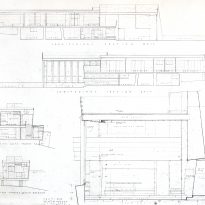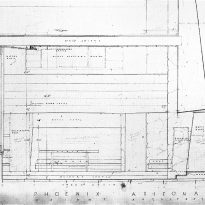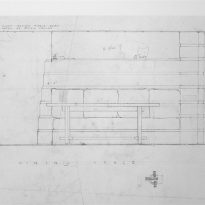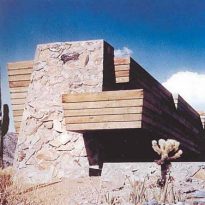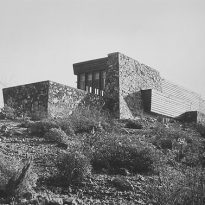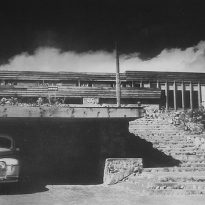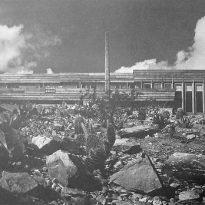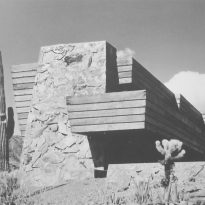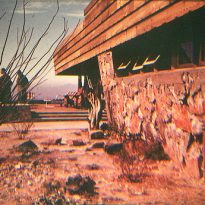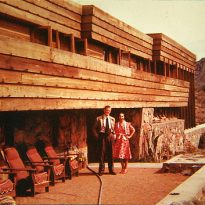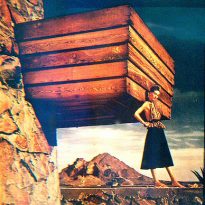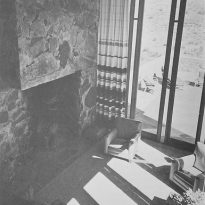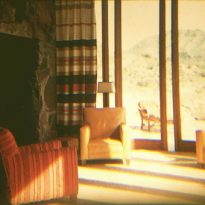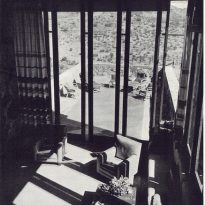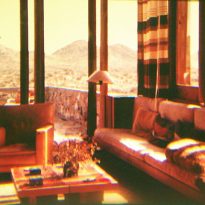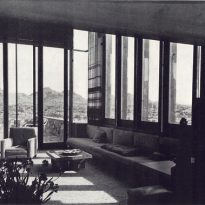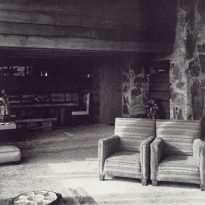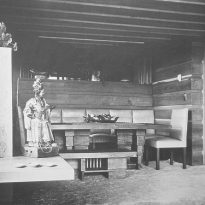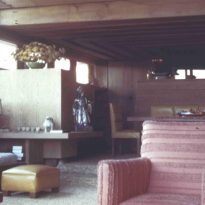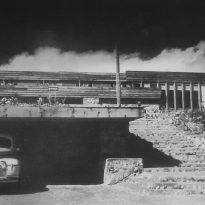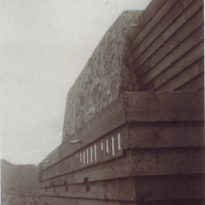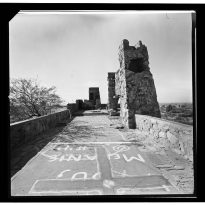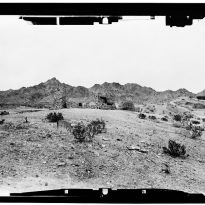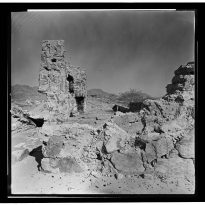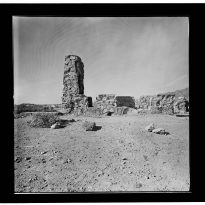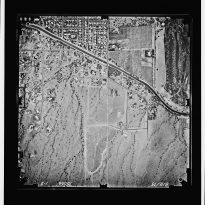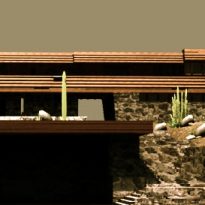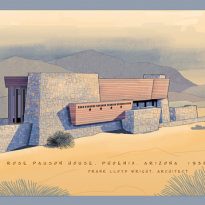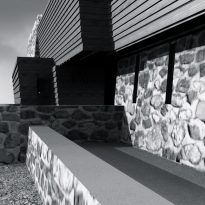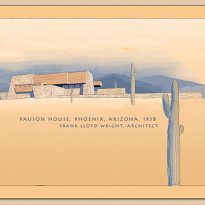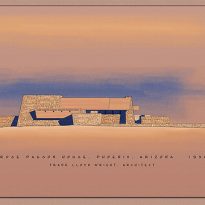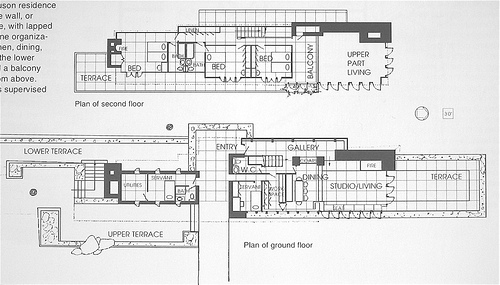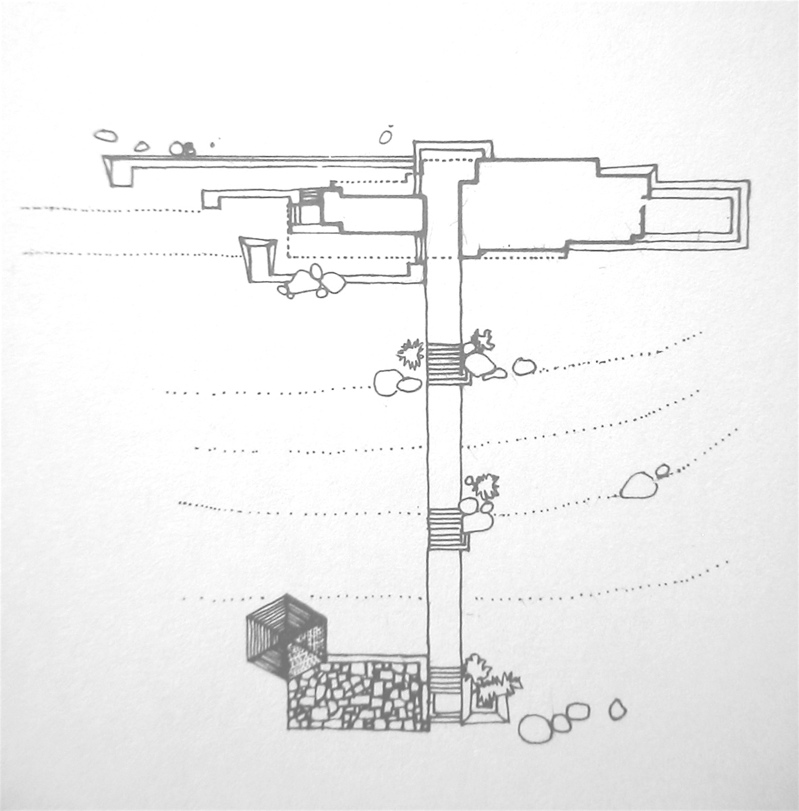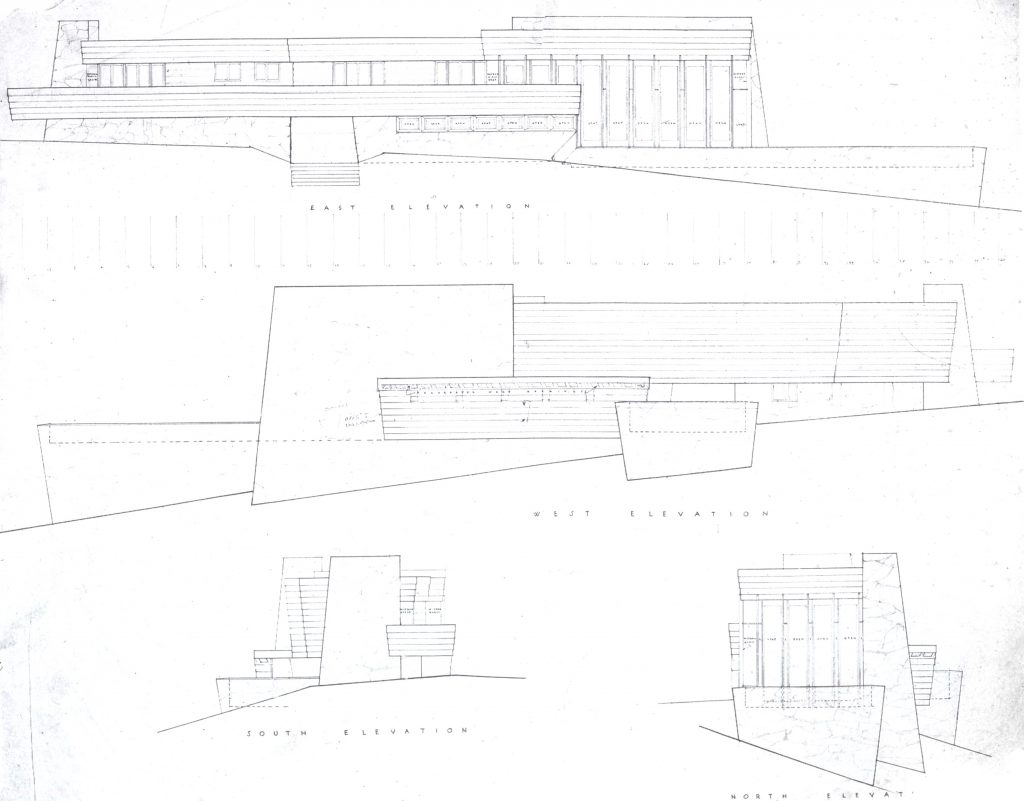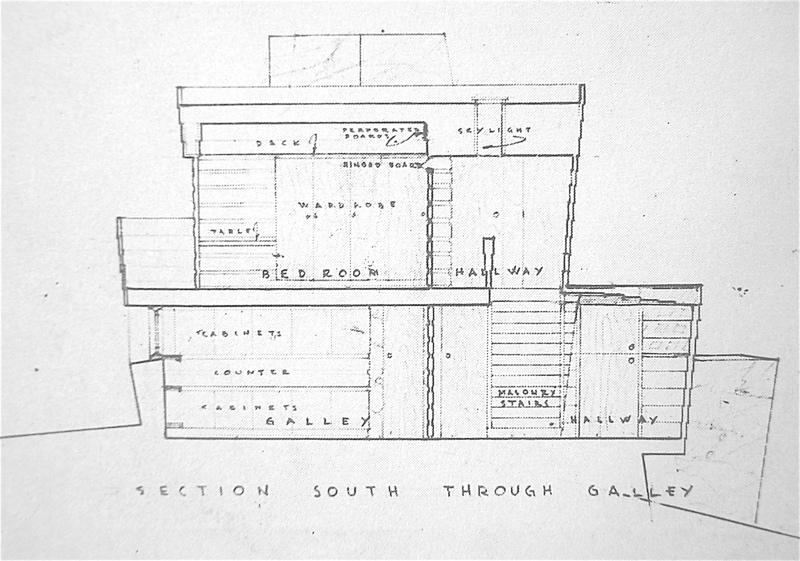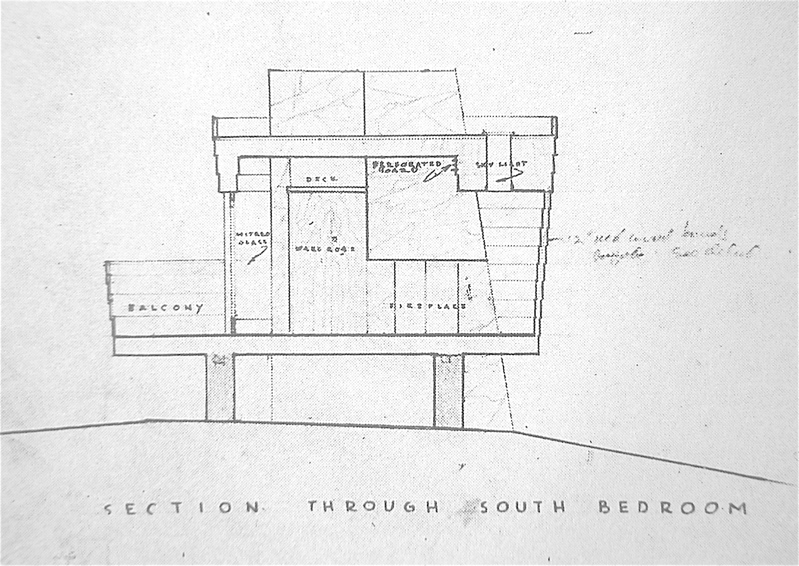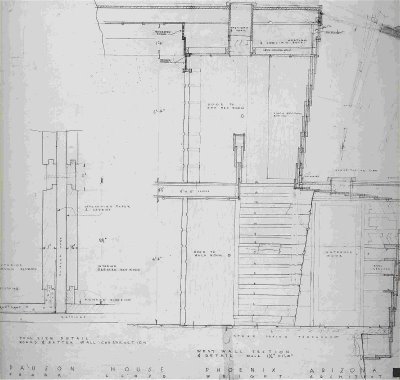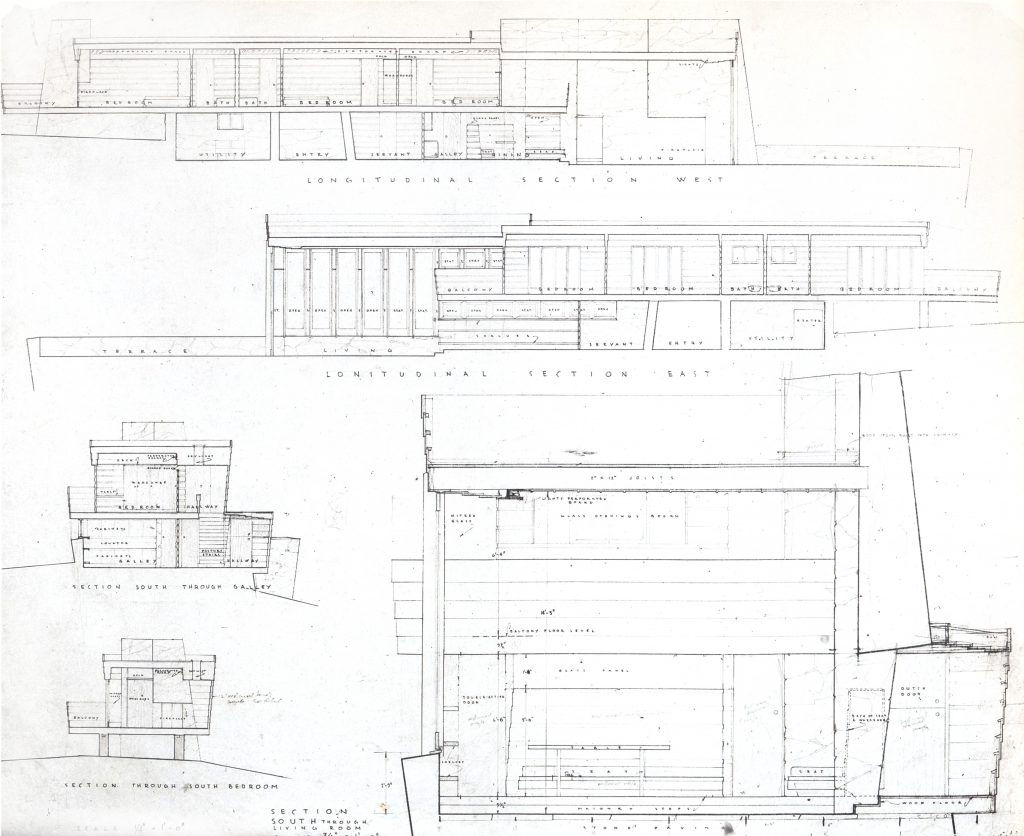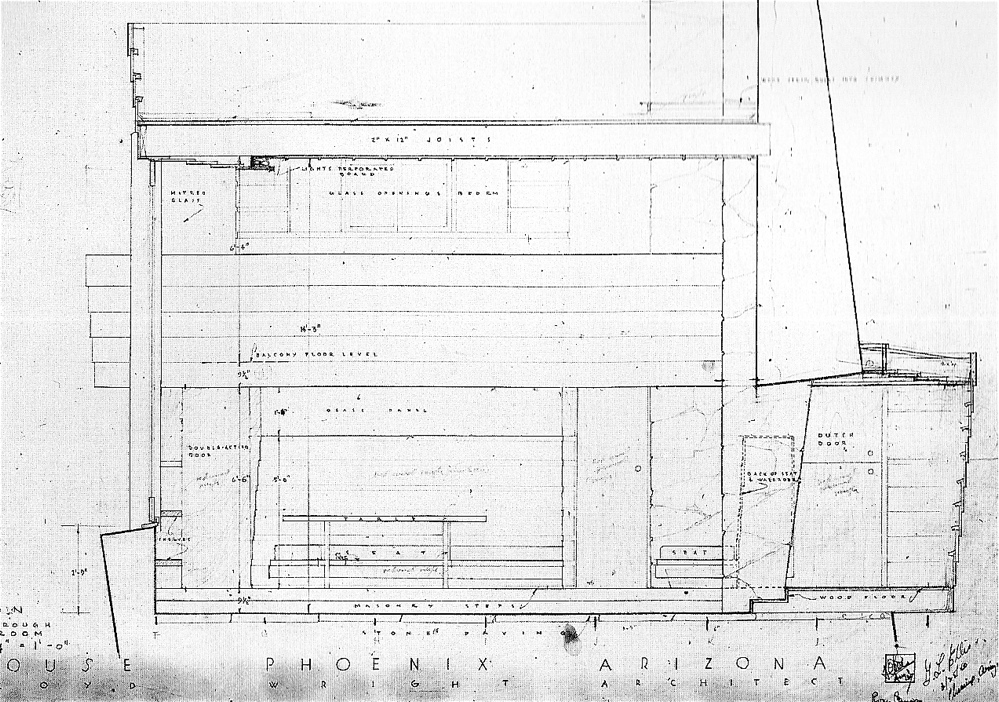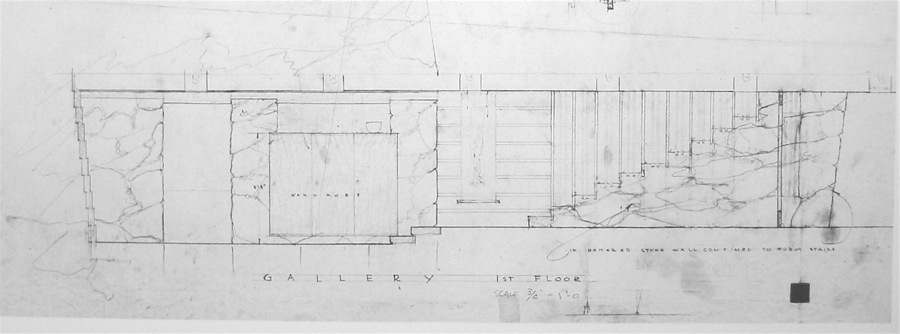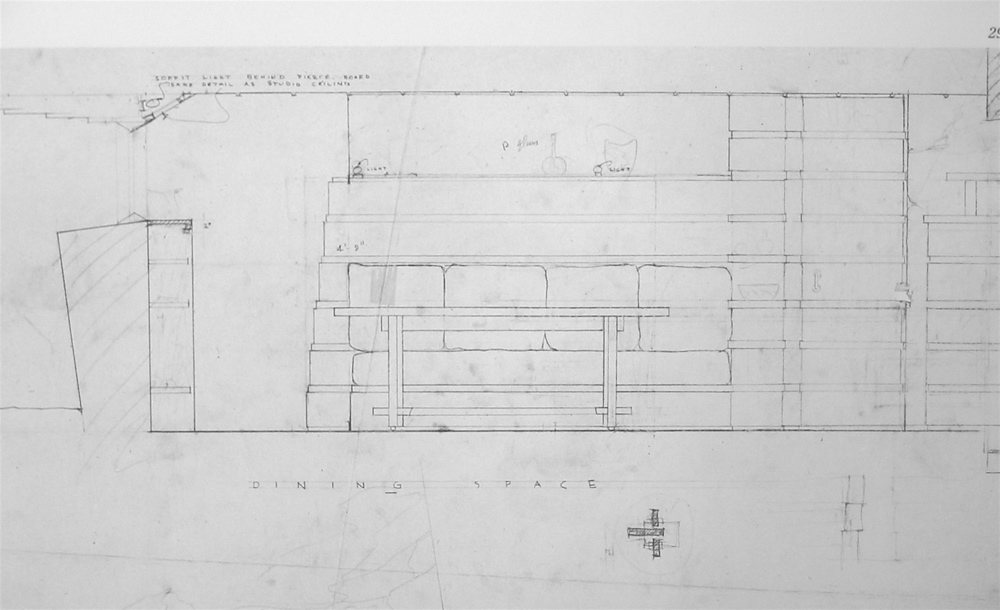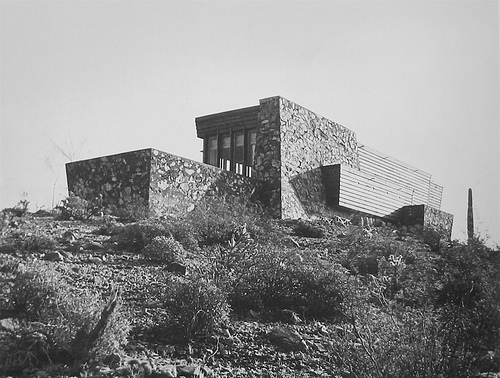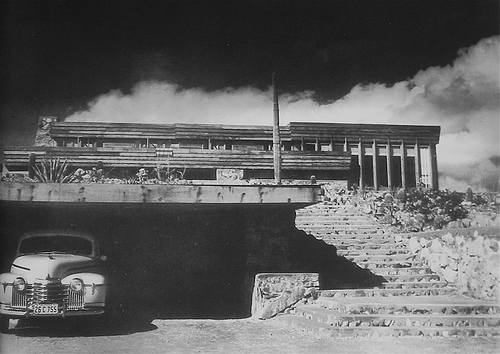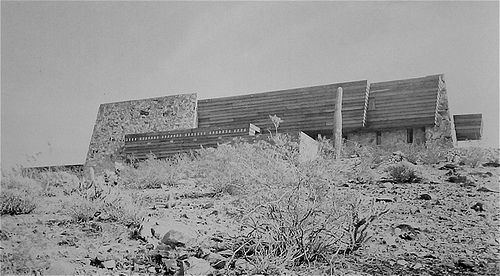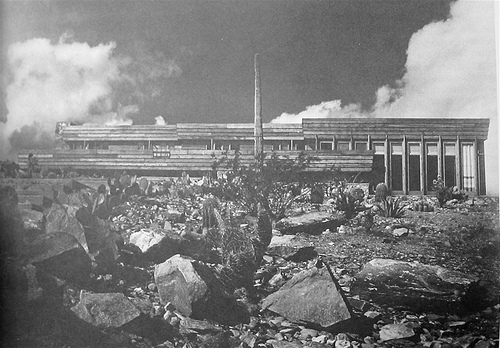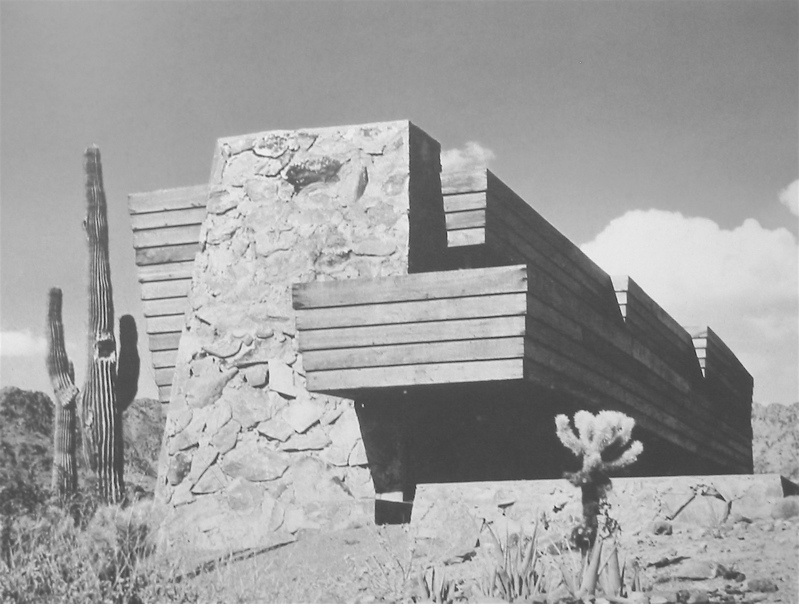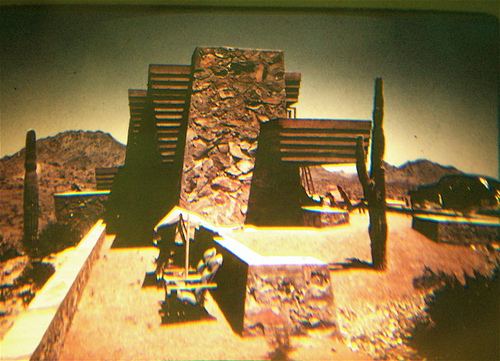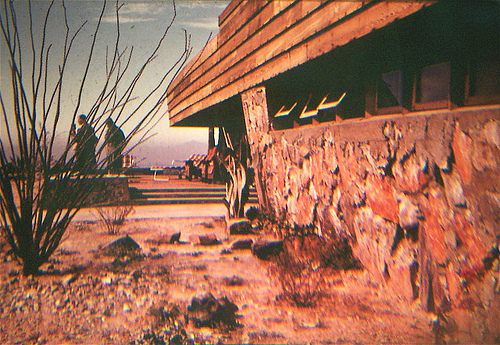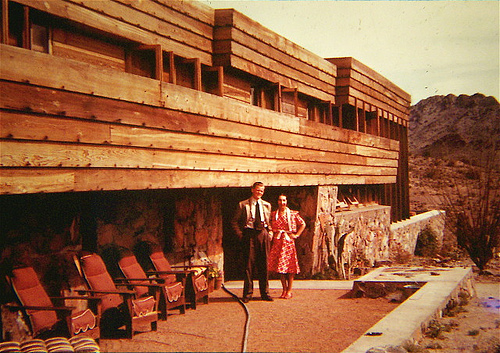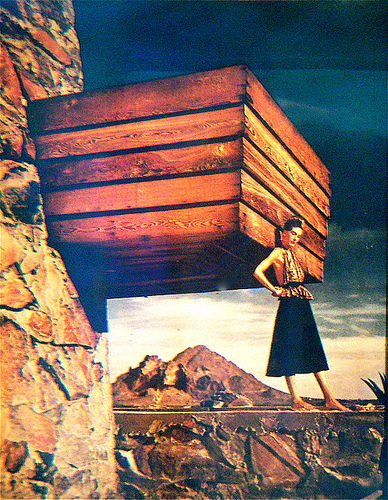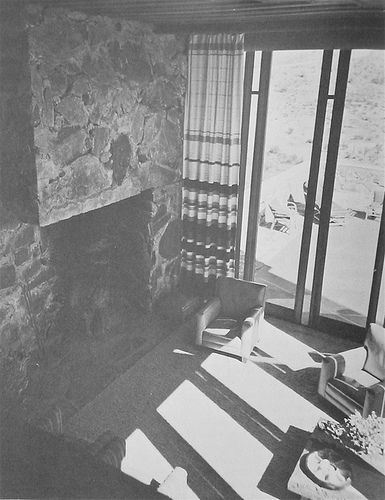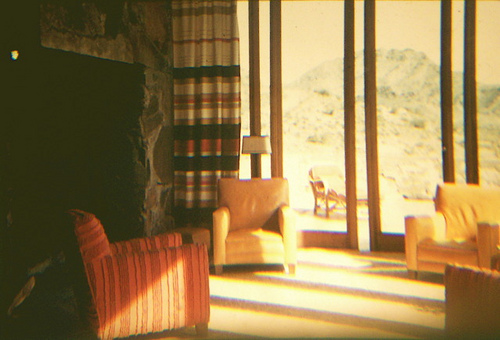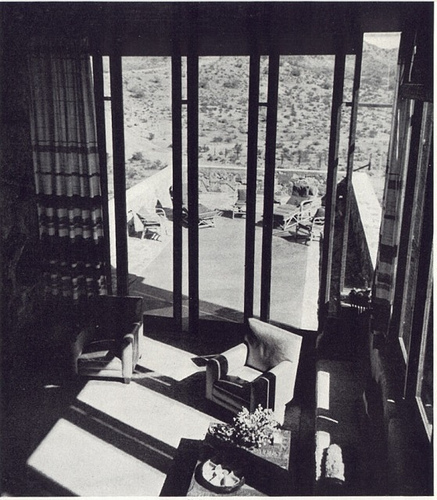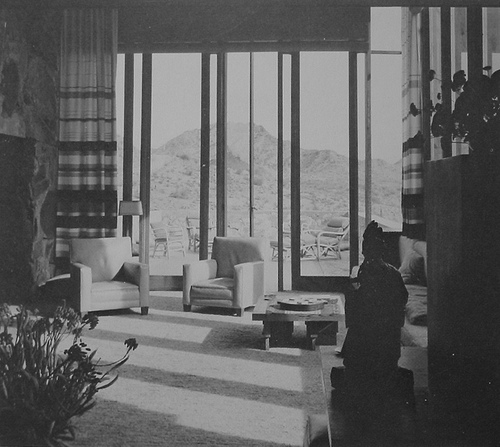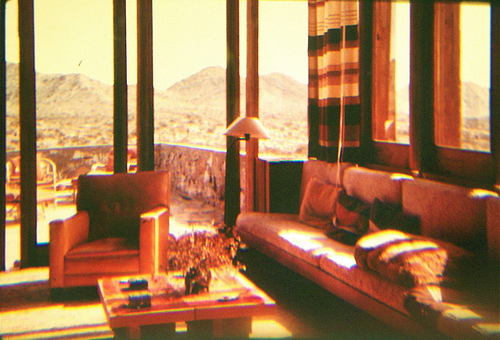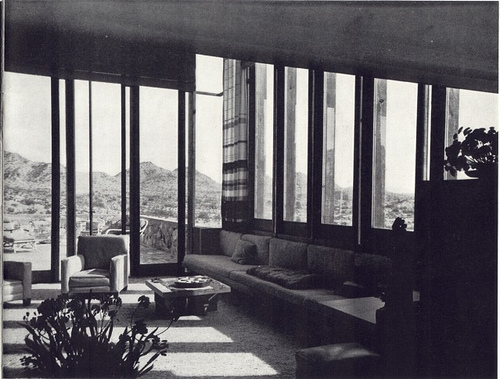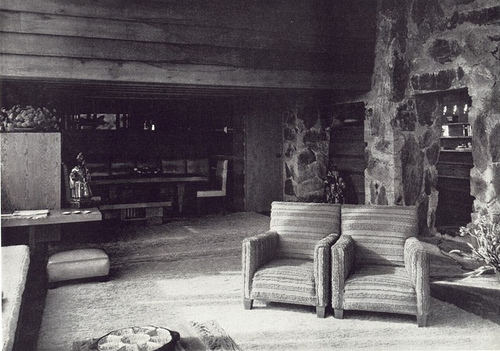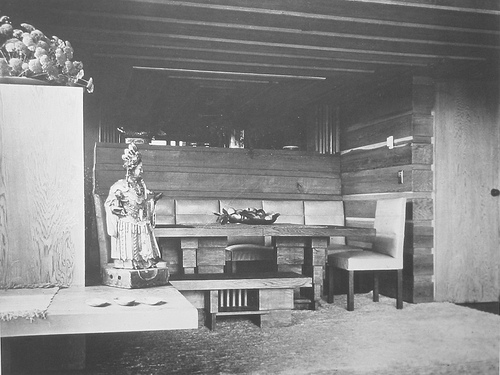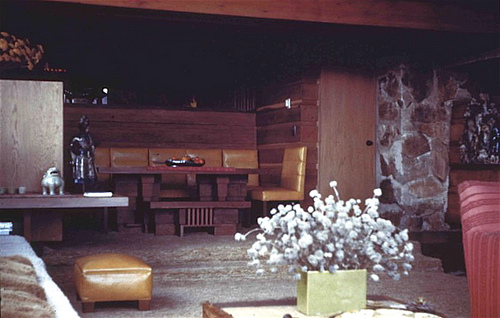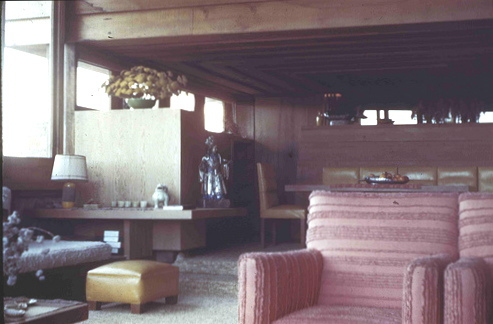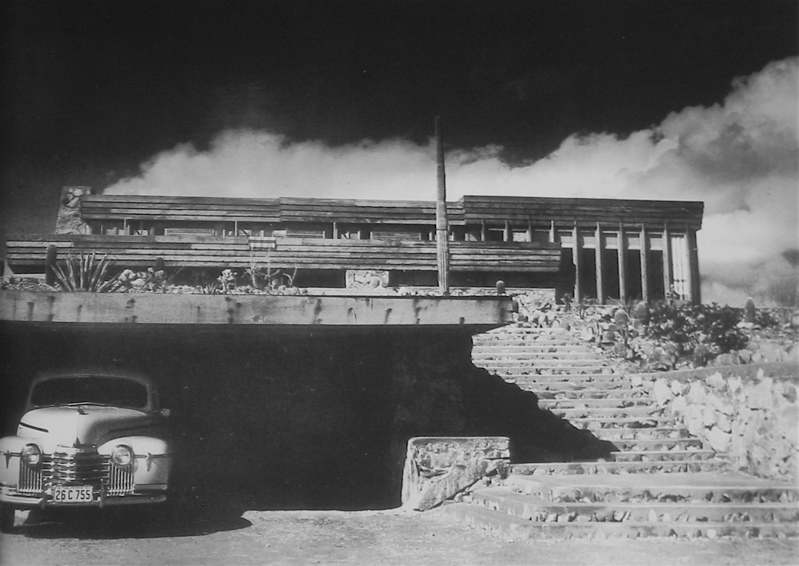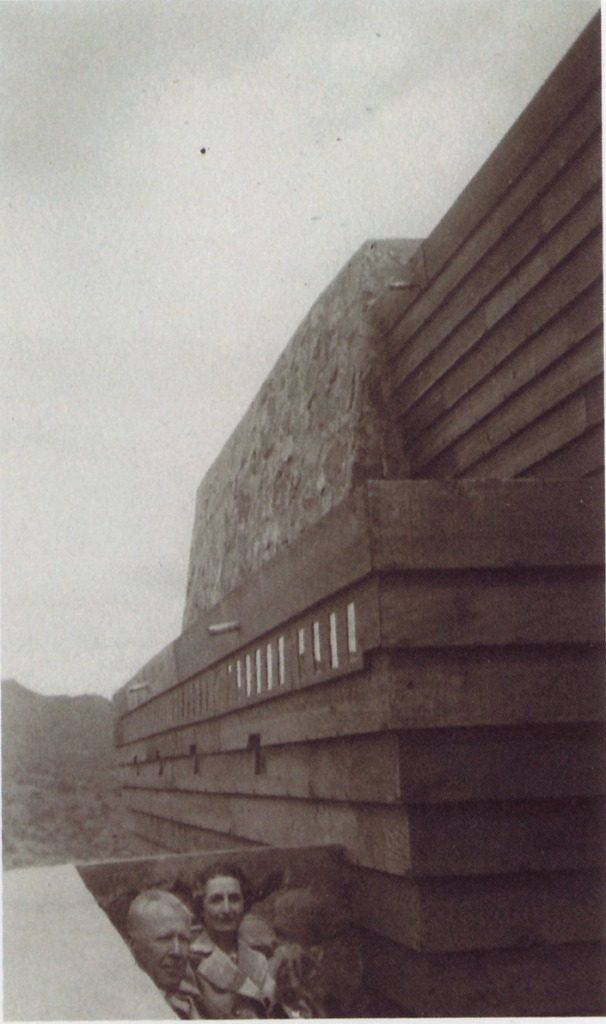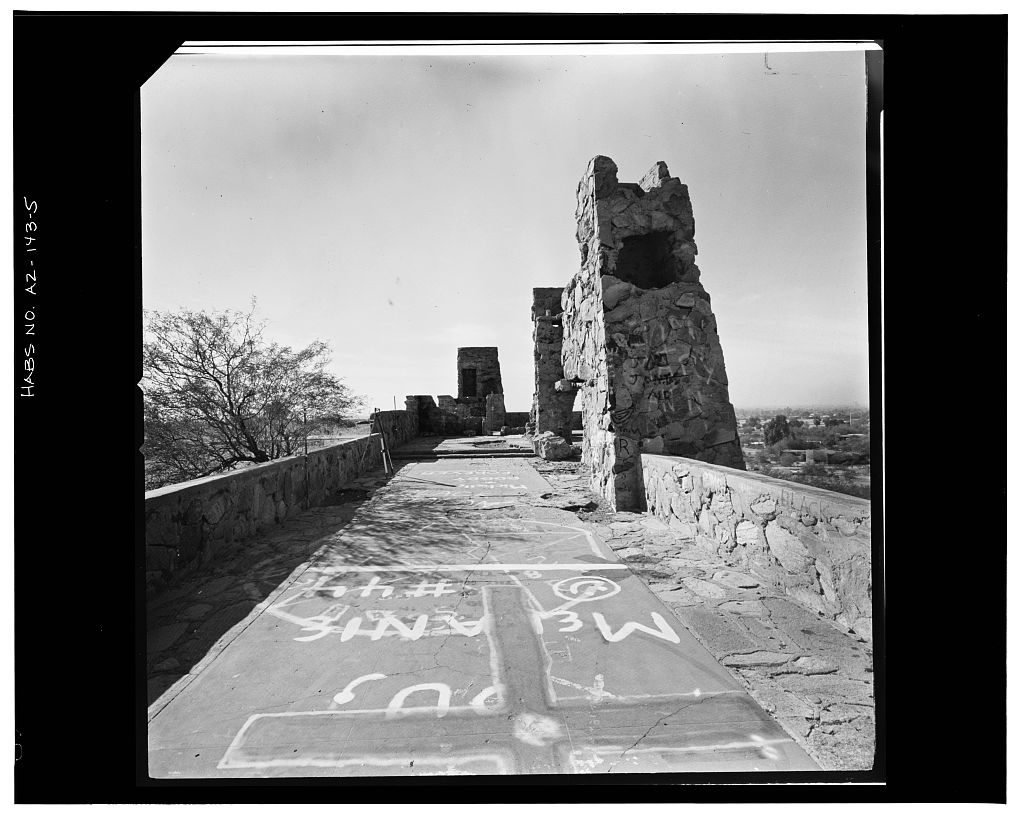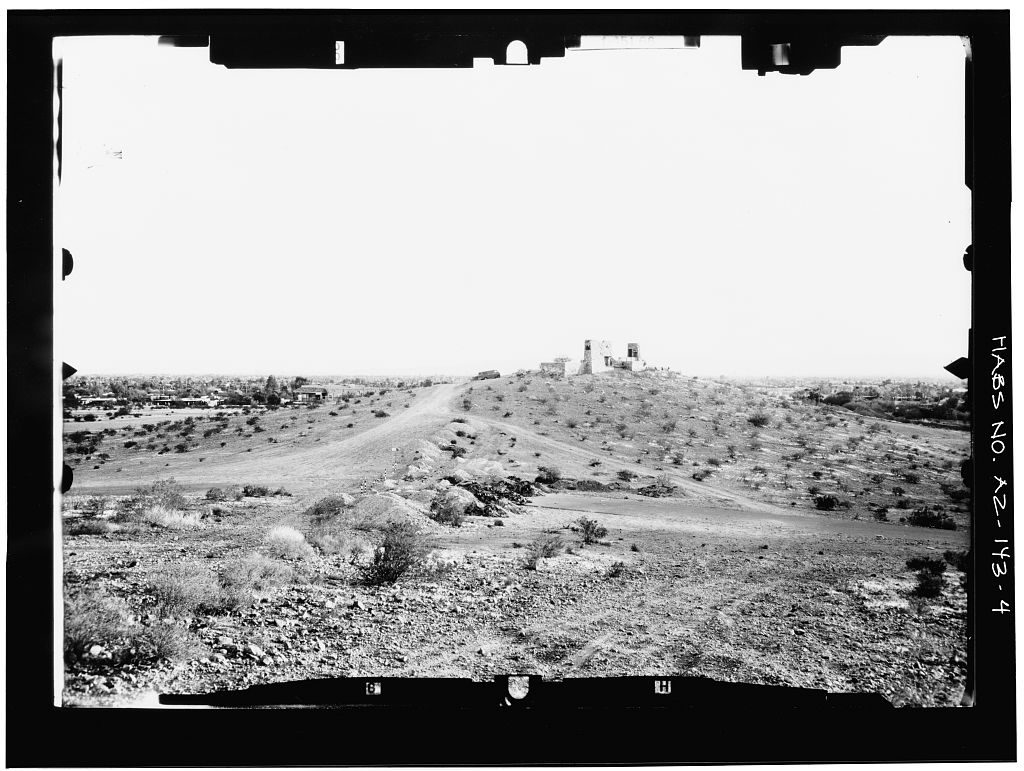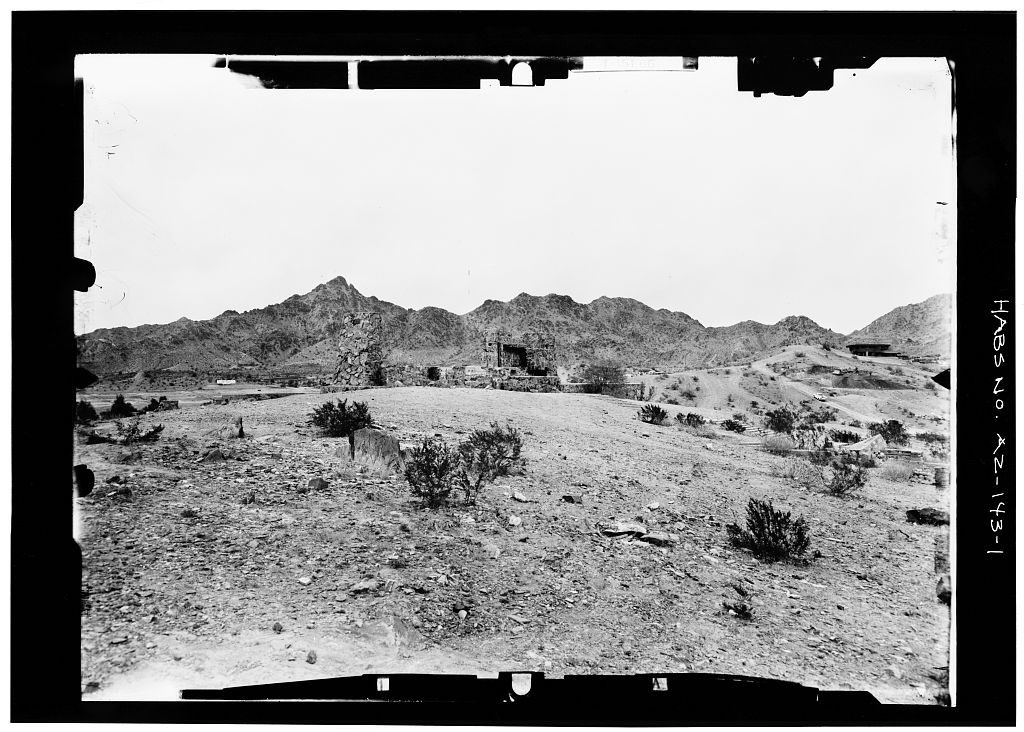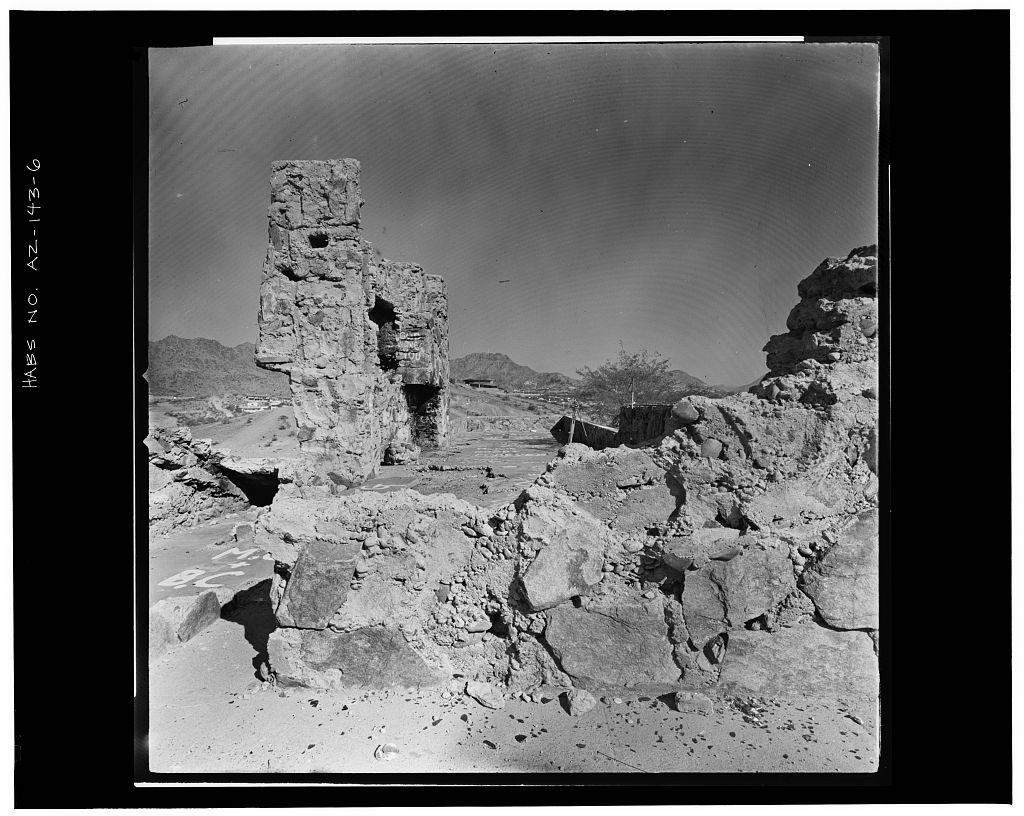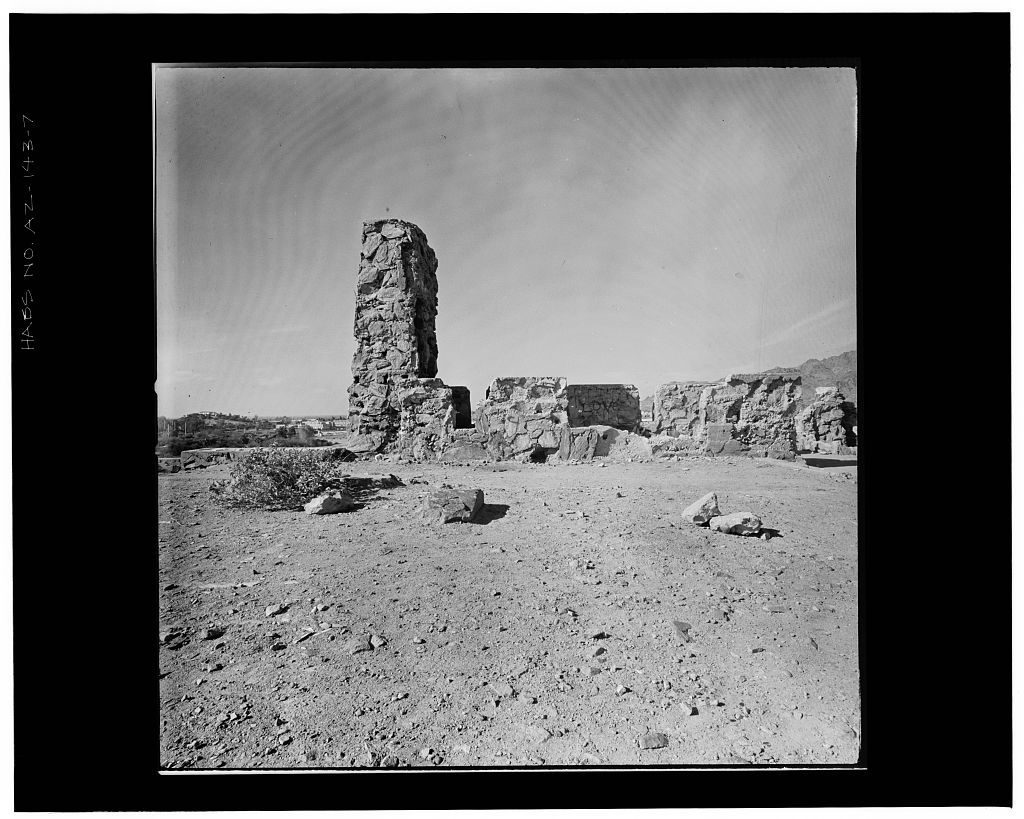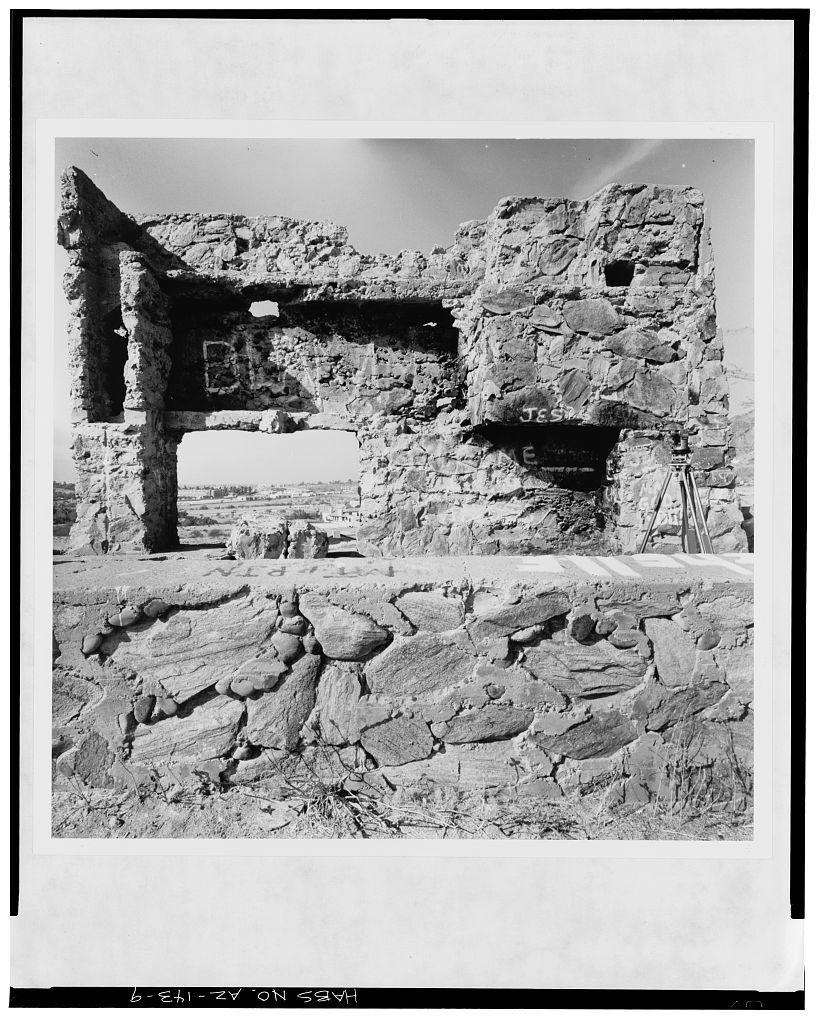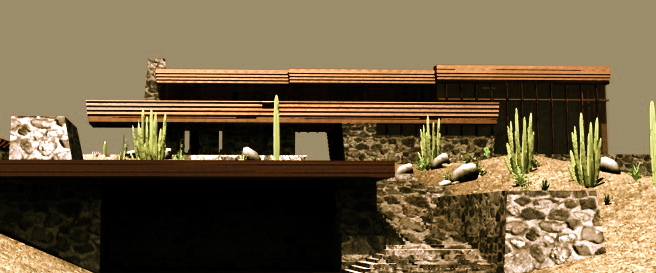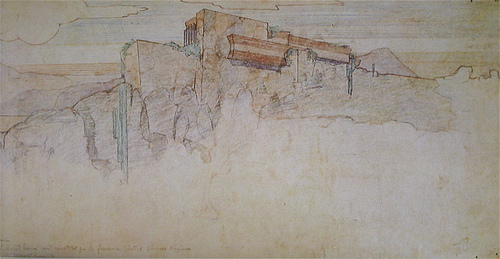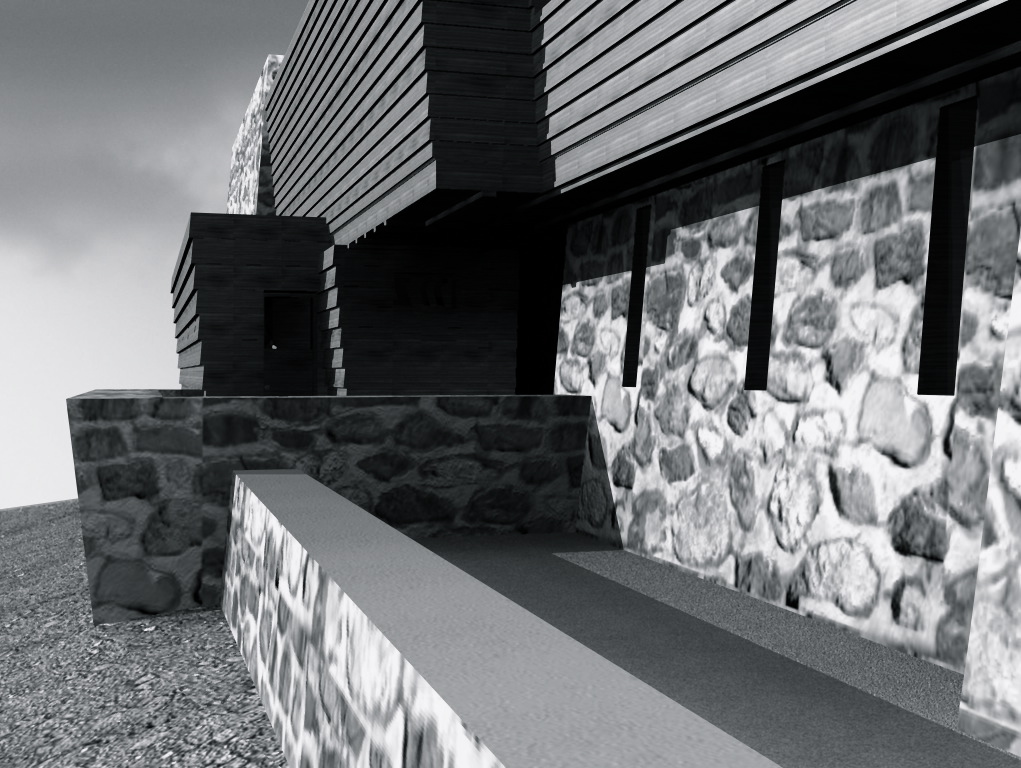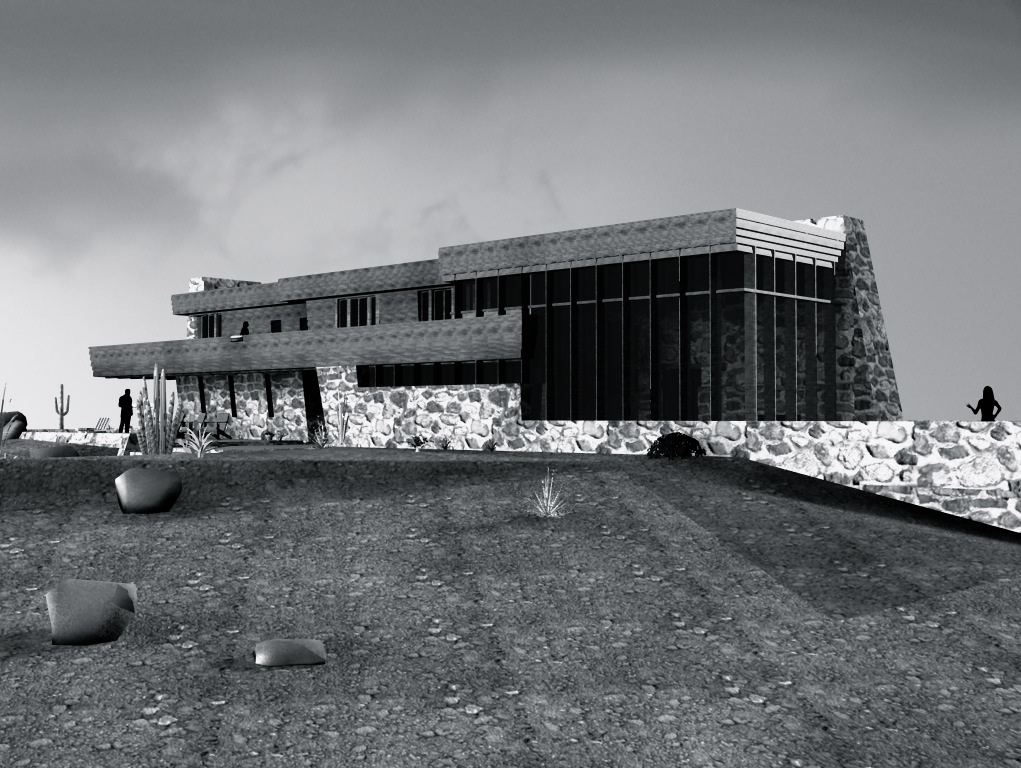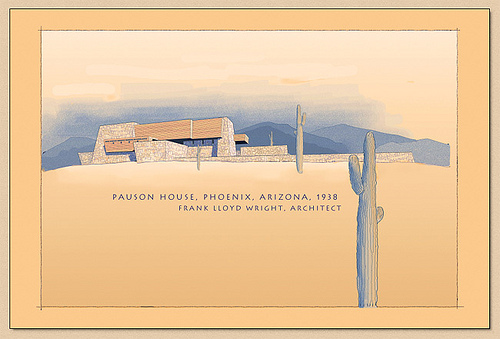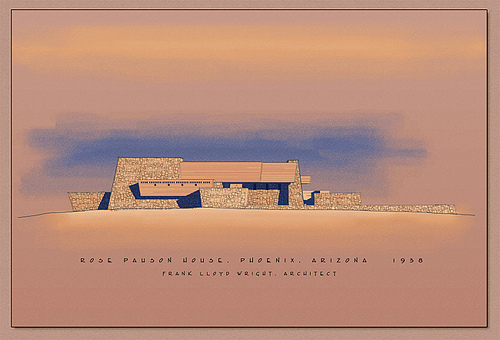Rose Pauson House

Introduction
The Pauson House was designed by Frank Lloyd Wright in 1939 and constructed in 1940 in the desert of Arizona, “the most wonderful Earth site” according to words of the architect.
Rose Pauson and her sister, Gertrude, only lived there one season. When returning to their native city, San Francisco, they had rented the home, it being destroyed later, in 1942, by a fire that originated from a live coal exit of the chimney reaching the curtain of a nearby window. After the fire, there were only the ruins of the foundations, walls and the chimney. These ruins became the local symbol known as “Shiprock”, due to their form and outstanding location, conserving itself through almost 40 years.
In 1979, the ruins of the house were to be removed from 32nd Street in order to extend the street. This generated a public protest by the preservation of the rest. The street was eventually extended; but first, architect Edward M. Jones of Jones Studio, Inc. relocated the chimney of 70 tons, 180 meters to the south, in the access of the Alta Vista subdivision lands, where at the moment it is like a monument.
Situation
The house was located on the present alignment of 32nd Street in the desert of Phoenix, Arizona.
It was located in the highest edge of a slope, to which there was to ascend to come near. The place is framed by mountain ranges that are lost in the horizon, whose earth is a stone of dark rosaceous color and its unique vegetation is the cactus.
The site is immense like all the American territory, which causes that the mediation between the domestic scale and the territory is a problem fundamental to give answer with the architecture.
Concept
In this work, the architect pronounces itself against the paradigms of the international style. The house is a transparent box, neither continuous, nor rootless. On the contrary, it is the revelation of a way to inhabit of a man and its world, a true place as it is it all work of architecture that aspires to being art. This is a house for “an american” that lives in the desert in relation to his immensity.
The work emerges from the rock as if it was a run aground ship, as if it had been there always, merging with the surroundings.
In his organization, Wright uses the classic directive of broken axis that we found in the reinterpreted Arab architecture in American key.
The project was conceived with the idea of solid refuge like a rock, discontinuous with its broken axes and implied with the Earth.
Spaces
The architect creates a subtle relation of scales when coming near to the house. As the slope is promoted where it is implanted, the presence of the stone wall is made forceful more and more compressing the surrounding space. A small opening in the stone wall frames to the desert. Crossing the same way, one goes below the house arriving at the balcony. The other side of the house is made of wood and the stone parapets of the balcony allow the visitor to show themselves and to see the desert in all its dimension. The viewpoint forces one to double to the right and enter properly the house there. It is distinguished here, the directive of broken axis before indicated.
The house is organized in two plants, with the aligned spaces. In the ground floor, two sectors divided by a semiplace setting are distinguished: the public zone where are the kitchen, dining room, to be in double height and a great terrace; and a zone on watch towards the opposite side. In the high plant, the area deprived with the dormitories is located along with a balcony.
Material
They emphasize in the house two fundamental materials: stone and wood, that are used as much outside as inside the house.
